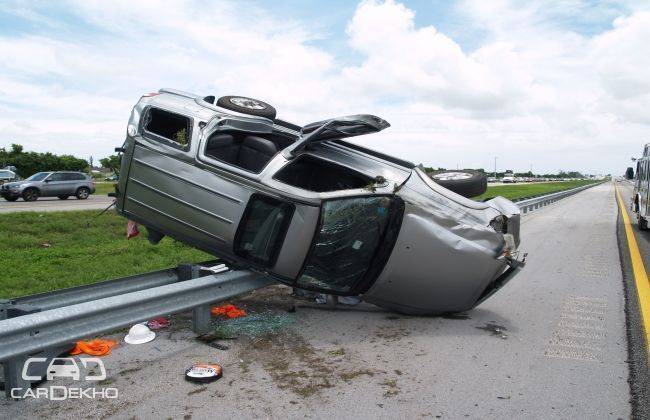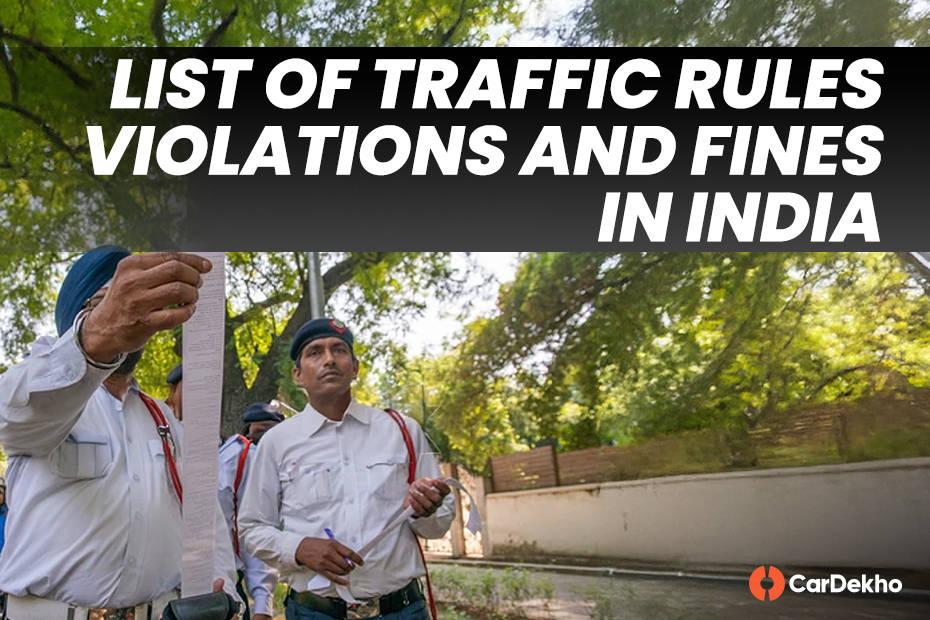5 Emergency Situations And How To Handle Them
Modified On Jul 18, 2019 10:33 AM By CarDekho
- Write a comment
It’s a pretty straightforward process to get yourself a driver’s license - register at your nearest RTO centre, get the learner’s license, enroll to train and practice at a driving school for a month and go back to claim your permanent driver’s license. While there are positives to it being that simple, there are a few drawbacks too which includes little to no training about what to do in the case of a driving emergency. So, we at CarDekho are happy to fill in the gaps for a safer driving environment for all.
We’ll be looking at some of the more commonplace driving mishaps which can occur despite no fault of anyone, and how to come out of them with minimal to no damage to yourself or your car. A good starting point is what keeps the car in contact with the road itself - tyres. There are plenty of tyre-related emergencies that can occur, some of which we have discussed in other articles too. For this one, let’s start with what to do in the case of a tyre blowout at highway speeds:
1. Blown Tyre
Picture yourself driving along the highway at a reasonable speed of 100kmph when you hear a sudden thud/loud bang and your car begins to wobble and shudder. You’ve just blown a tyre. The most common reaction in this scenario is to instinctively brake really hard to try and stop the car and pull over to the side. That’s the wrong move. Trying to steer with a blown tyre at those speeds will almost certainly cause your car to veer violently off course and possibly fish-tail, tumble upside down or skid out of control.

To avoid any of that, follow these simple steps
-
Instead of hitting the brakes and trying to steer to the side, try to focus on keeping your car in a straight line.
-
Don't worry about the momentum; a flat tyre produces enough rolling resistance to slow down your car drastically on its own.
-
Maintain a straight course while gently applying the brakes. Engage your blinkers if possible to warn drivers coming behind you.
-
Once you have slowed down considerably (which will happen quickly enough because of the drag force), engage your turn signal and smoothly coast down to the side of the road.
-
As an added precaution, turn your car in the same direction as the side of the blown tyre if possible. So if your right tyre has blown up, turn towards the right side of the road. This makes the procedure safer.

2. Tread Separation
Tread separation is another common occurrence at high speeds. Remember, tread separation is different from a blown tyre and although the recovery process is similar, it is often the more dangerous scenario of the two.
Tread separation happens when the tread rubber coating and the underlying steel mesh belt come off of the tyre, either partially or completely. Why is it more dangerous? The reason for this is that once your tread has come off the tyre; the steel mesh will shred into several pieces and at high speeds it could sheer through your brake lines, fender panels and even your passenger windows or fuel tank.
There are a few ways to distinguish tread separation from a blown tyre:
-
If your tyre and tread are about to part ways, you will hear a consistent thumping noise while driving which will progress to a slapping sound as more of the tread peels off your tyre.
-
If the tread is completely separated from the tyre, then you will hear the steel mesh belt grinding on the road.
-
If you hear any of these sounds, slow down immediately but calmly, and inspect the tyre.
-
If the damage is not severe, you can head straight to a tyre centre or strap on the spare in case of excessive damage.
However, if you are at a high speed and feel that the tread is starting to come off, follow this procedure to safely come to a halt:
-
Keep even pressure on the accelerator and then release it slowly.
-
Maintain a straight steering course and avoid turning until you have reached a speed of about 30-40 kmph.
-
Apply as little pressure as possible on the brakes and allow the vehicle to simply coast down the road as much as possible.
-
Avoid turning until you are at a speed of about 30-40 km/h.
-
Engage your turn signal and slowly and smoothly turn to the side of the road.

3. Jammed Accelerator
This is a relatively rare occurrence in modern cars, but it has been known to happen with faulty vehicles when the throttle gets jammed and your car turns into a speeding roller coaster. The first thing most people will do to deal with a stuck throttle is to ram their brakes as hard as possible. Although this manoeuvre will slow you down, it is still potentially dangerous.
Follow these steps if you face a situation where your car is accelerating out of your control
-
The first and foremost thing is to check if you aren't simply confusing the brakes with the throttle. Ensure that you are not depressing the throttle instead of the brakes.
-
Switch the gear to neutral or depress the clutch if you are in a manually geared vehicle. Do not worry if the engine keeps revving as most cars come with limiters that will prevent any damage to the car’s powertrain.
-
As a last resort, you may also try switching off the engine in an attempt to stop. However, use this option only if you have exhausted the previous ones as most cars will become extremely hard to steer once the power steering system is disengaged.
-
if your car has a push-button engine start/stop system, you may not be able to avail this option. In that case you will be limited to only the first two options.

4. Losing Traction
Sometimes your tyre is simply too worn or due to tricky road conditions, it’s possible to lose traction, which could send your car into a spin or fishtail. While an accidental spin is one of the worst driving related experiences, the car can be controlled in many cases and without too much difficulty. Here’s what to expect and then do in case your car does lose traction:
-
Don’t floor the accelerator OR the brake pedal as an instinctive/panic reaction. It is important to keep as calm as possible to get out of this with little to no harm done. Simply slamming down on the throttle or brakes will most likely make matters worse and could end with you running into a barrier or a tree.
-
Steering inputs are key to dealing with unexpected under-or-oversteer. Hang onto that steering wheel and remember to judge your counter-steering inputs correctly. Even while counter-steering, if you overdo it, you may end-up making things worse. Calmly judge exactly how much counter-steer you need and in which direction.
-
Once you have decided which direction you will counter-steer in, you may need to lightly step on either the brake or the throttle. In most cases, you will require a little acceleration to help you during the counter-steer. Remember to maintain your calm and apply this procedure methodically.
- NEVER slam the brakes right at the start of the spin-out as this will simply mean you are asking your tyres for extra traction when they are already struggling for grip and cannot provide any. The best way is to simply counter-steer and accelerate out of the spin.

5. Lack of ABS (Anti-Lock-Braking-System)
If you happen to have an old car that does not have an ABS (Anti-Lock-Braking-System), chances are you will have trouble during sudden or emergency braking. The ABS feature helps ensure that if you slam onto your brakes during an emergency stop, they do not lock the wheels, which could result in a skid where steering inputs won’t help to avoid the obstacle.
All new cars are now equipped with ABS and EBD as standard by law, and should reduce the odds of a lock-up slide in an emergency braking situation. However, in case your vehicle is not equipped with an ABS braking system, remember to apply the brakes cautiously and to have your hands on the steering wheel to make sure you can try and avoid any obstacle in your path.













